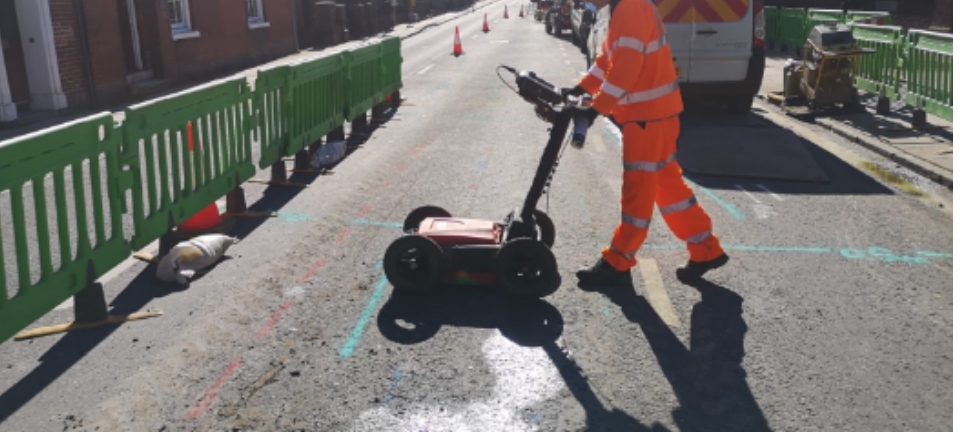Starting from Building and Preservation: GPR Surveys Revealed
GPR, or Ground Penetrating Radar, is a essential instrument that has transformed the way we approach both the construction as well as preservation. With its ability to non-invasively scan beneath the surface, GPR surveys are transforming the detection of and analyze subsurface utilities, archaeological sites, and the integrity of structures in multiple settings. Such innovative technology is vital for engineers, archaeologists, and environmental professionals alike, delivering them with crucial information that enhance project efficiency and safety measures while reducing hazards.
In the current rapidly evolving world, the significance of GPR surveys cannot be overstated. Starting with aiding identify possible challenges before construction initiating to discovering buried items beneath our feet, GPR is not just a technological advancement—it marks a fundamental change in how we understand and our interaction with the earth around us. In this article, we will discuss the benefits of GPR inspections, the technology behind this technology, and their applications in various industries, providing a detailed examination for individuals looking to utilize the capability of this extraordinary tool.
Understanding GPR Techniques
GPR, or Ground Penetrating Radar, represents a non-destructive geophysical method that employs radar signals for detect the underground. By sending high-frequency radio waves through the earth, this technology detects the returned waves from various underground features. The strength and duration taken for these signals to return to the top assist in recognizing different substances, infrastructures, and gaps beneath the earth. This proven technology is growingly gaining popularity in multiple fields due to its effectiveness and effectiveness.
The methodology behind GPR includes a sender that sends out radar signals, and a receiver that collects the returned waves. When these signals encounter boundaries between different substances – like soil, rock, and artificial objects – they reflect to the top. The information collected is then processed to create high-resolution images and profiles of the ground, showing details such as the elevation and layout of utilities, geological formations, and potential anomalies.
As this method keeps to evolve, advancements in data analysis and interpretation software improve the clarity and precision of the results. This progress enables more intricate analysis, allowing professionals in building, archaeology, and environmental science to make informed decisions based on reliable underground data. With its growing potential, GPR is recognized as a vital instrument for contemporary subsurface investigations.
Benefits of GPR Surveys
GPR surveys offer a non-destructive method for identifying features below the surface, making them invaluable in multiple industries. One primary benefit is their ability to provide immediate information without the need for digging. This means engineering teams and construction teams can locate and chart subsurface utilities, geological formations, and other structures quickly and efficiently, significantly reducing the risk of harming existing installations. The ability to see what lies beneath the surface before any digging allows for better preparation and execution of construction projects.
Another benefit of GPR surveys is their affordability. By detecting https://hack.allmende.io/rx_7IKejRmmSm-tybs8XgA/ before they escalate, GPR can help prevent expensive hold-ups and fixes associated with hitting hidden utilities or structural anomalies. Additionally, GPR technology can streamline the construction process, as teams can make informed decisions based on precise underground assessments. This not only reduces time lost but also cuts down on financial costs, ultimately leading to more successful outcomes.
Furthermore, GPR surveys improve safety on construction sites. By clearly identifying underground hazards like pipes or voids, teams can work with confidence, reducing the likelihood of incidents caused by unexpected encounters with utilities. This enhanced safety contributes to a smoother operation and can lead to lower insurance premiums over time. The combination of greater safety, financial savings, and efficient operations makes GPR surveys an essential tool in contemporary construction and engineering practices.

Uses in Industries
Ground Penetrating Radar scans are increasingly adopted across various fields for their capability to provide comprehensive underground imaging free from the necessity for extensive excavation. In building and civil construction, GPR helps in locating utilities, recognizing potential hindrances, and assessing ground conditions. This information is essential for guaranteeing security and compliance with regulations, greatly minimizing the likelihood of damage to current infrastructures during recent construction or remodeling tasks.
In the field of historical studies, GPR has changed how scholars locate and record historical items without disrupting the earth. By mapping out https://postheaven.net/landsurveysworcestershire525/geophysical-radar-surveys-linking-the-chasm-between-geology-and-technical , anthropologists can pinpoint the locations of possible excavation locations, which enables more streamlined digging processes and the conservation of historical settings. This gentle approach improves the capacity to discover hidden treasures while minimizing environmental impact.
Ecological and soil investigations also benefit immensely from GPR technology. It assists in analyzing contamination, mapping groundwater depths, and understanding soil composition. These analyses provide essential data to engineers and environmental scientists, enabling educated decisions in restoration efforts and promoting responsible land management practices. The flexibility of GPR makes it a useful tool across a diverse range of sector applications.